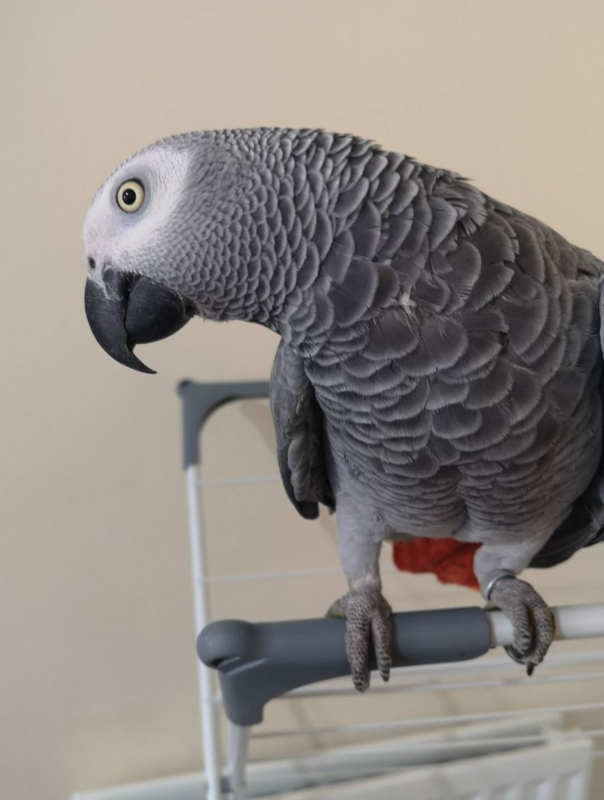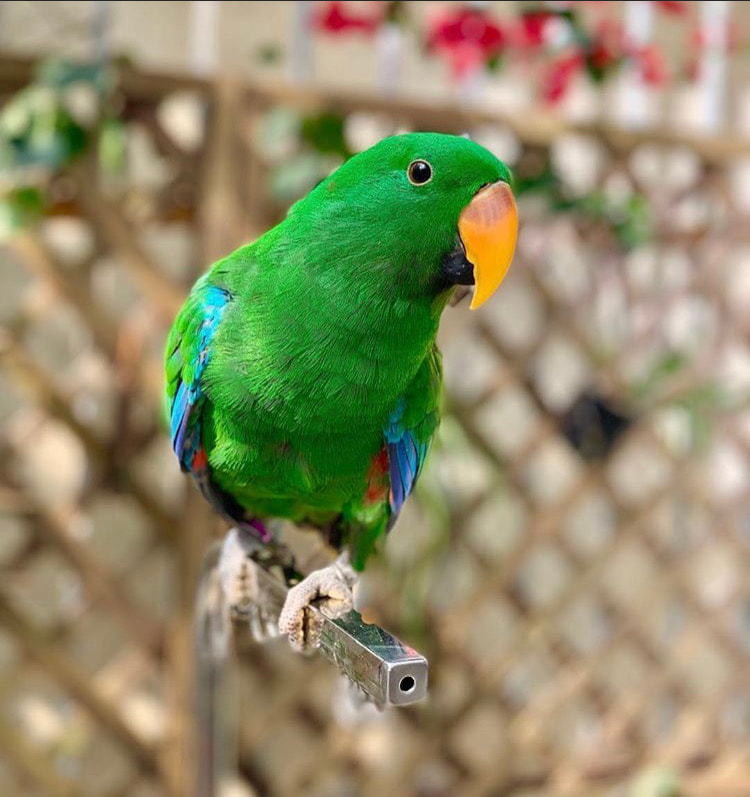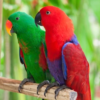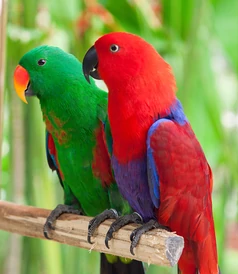SOLOMON ISLAND ECLECTUS for sale
$650.00 – $950.00
Babies under 6 months and Adults Currently Available
Eclectus parrots live in tropical rainforests and originated in the Solomon Islands. Wild populations also live in northerneastern Australia, Indonesian, the moluccas, and New Guinea. its name “eclectus” is derived from the word “electric” since the male and female look so different.
In their native monsoon forest, eclectus nest high up in the trees. They usually manage to find a deep nest hole in a tree where they can lay their eggs and raise a family.
There are several eclectus parrot subspecies. The Solomon Island eclectus is the most common one in the pet trade.
The eclectus is a very friendly and intelligent bird species described as gentle, tranquil, and caring. Eclectus parrots are also affectionate. Most thrive best when socilaization is part of their daily routine. They cherish the time they spend interacting with their families. They are also sensitive and can quickly become stressed if they feel neglected.This bird will learn the routine and what to expect in your household. They enjoy the comings and the goings, as well as being a part of it.Around 18months of age, the birds begin to reach sexual maturity. Sometimes this brings with it some aggression or the instinct to “feed” whatever is nearby. You may notice some naughty nipping behaviour. This period is called bluffing, and it is best to ignore it and turn to distraction techniques instead of reinforcing it. With time, they pass through the phase and learn what’s acceptable.
While both the males and females of the species make lovely pets, many owners claim that males tend to be a bit more trainable and agreeable. On the flip side, females may also bossier and more aggressive than a male, particularly during breeding. Even in captivity, a female’s nesting instincts remain strong. you might find her trying to nest in secluded areas of your home.
Eclectus parrots join Amazons and African greys as being one of the best species for training to speak. They are quick to learn almost anything you want to each them. Many people find them to be on the quieter side when compared to other parrots. They have a distinctive honk and other vocalizations that can be amusing the first few times, but loud and startling.Eclectus Parrot Colors and Markings
Eclectus are known as sexually dimorphic, meaning that you can tell the sex of the bird by its physical characteristics. Male eclectus birds are brilliant emerald green color with bright orange beaks and splashes of red and blue under their wings. By contrast, the females are mostly bright red with black beaks deep purple markings on their chest and tails. Before early 20th century, since the male and female birds looked so different, they ere thought to be entirely two different species.
Instead of distinct lines found on many bird’s feathers, eclectus feathers seem to blend. Their coloring makes for brilliant camouflage in their native habitat; you can often hear them before you can see them.Caring for an Eclectus Parrot
Most eclectus birds can live in a multiple bird household, but some have jealous tendencies. Make sure to give an eclectus your individual time undivided time and attention when introducing it or any new bird or your aviary.
An eclectus lives best in an aviary- 11 feet long by 3 foot wide and 7 feet high- especially if you keep a pair. These birds like to fly, climb, and stay busy. If you do not have a room for an aviary, then make sure the cage you provide is at the minimum 2 feet long by 3 feet wide and 4 feet tall.
This species can be a good fit for households with children as it has a gentle nature. however, they don’t like to be startled and prefer a calm environment. They are not big fans of constant loud noises like barking, crying, or screaming. Thus, it’s essential to consider if your dynamic is a good match for the bird.Common Health Problems
An eclectus is unique in that it sometimes exhibits toe-tapping and wing-flipping. This behavior is similar to feather plucking, which is a common issue with parrots that feel neglected. However, when all three of these actions occur in an eclectus, it can be a sign of severe health issue. Nutritional deficiencies caused by excess vitamins and minerals (like vitamin A), fortified foods, or artificial ingredients as well as eating foreign objects like beads, or stress are probable causes. it’s vital to see an avian vet right away.
Diet and Nutrition
In the wild, these birds prefer pomegranate, papaya, and figs, though they’ll also eat flowers, buds on trees and a few seeds. When kept as a pet, their diet must include fresh fruits, vegetables, and carbohydrates. Cooked pasta or grain bake- a homemade casserole just for birds- will ensure they get all the necessary carbs.
The eclectus has a specialized digestive tract that is different from many other bird species. This bird needs to be fed a diet high in fiber and low fat. it’s also best to avoid to many vitamin and mineral supplements, which could lead to digestive tumors or abnormal behavior.
Avoid feeding parrot mixes that contain artificial dyes, flavorings, or preservatives. These additives could cause your pet to loose its beautiful color and may even be toxic for sensitive species.
An eclectus’ daily meal should be about 80 percent fruits and vegetables- the rest can be parrot pellets. Give seeds and nuts as occasional treats. Feed this bird twice a day, once upon rising, and 1 to 2 hours before bedtime. Offer 1 cup of fruits and vegetables and 1/3 cup of parrot mix at each feeding.
Exercise
The eclectus are active birds and need plenty of room to exercise. They should have access to a large play stand and a bird-safe area for climbing and exploring. At the very least, provide an hour of free flight time before breakfast and another hour of free flight time before dinner.
You’ll also want to provide these birs many perches of different materials and diameters, so their feet remain healthy. A climbing ladder, swings, and a slew of fun toys to beat up and chew on will also make the eclectus happy.
If provided with enough stimulation, they do a better job than many parrots at keeping themselves occupied when you’re not around. The more challenges you can give these smart birds, the better.
| Gender | MALE, FEMALE |
|---|---|
| Age | 12 months, 18 months, 6 months |
Be the first to review “SOLOMON ISLAND ECLECTUS for sale” Cancel reply
Related products
Eclectus Parrot




Reviews
There are no reviews yet.